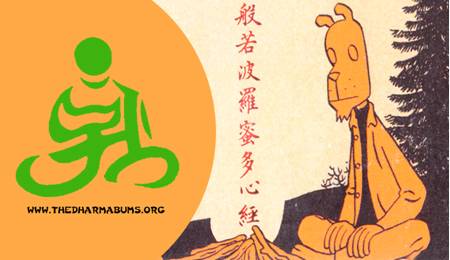Dharma Bum Life Program - Master Slideshow
Saturday, June 13, 2009
Thursday, June 11, 2009
Week 2 Guest - Jo-Ann Jaffe

Jo-Ann Jaffe came to speak about Second Chance which is a non-profit that assists homeless and those who have completed prison sentences in finding employment. The program is so successful, 70% of those enrolled keep jobs for a year or more, that they have moved to a lottery system so they can keep the program small and effective.
In some ways, the program is similar to the Dharma Life Program in that everyone is treated as an adult. Also, in the beginning, they tell their stories on how they got there. Of course, everyone feels that their story is the worst. This was similar to Week 1 of the Dharma Life Program where we read the letters. Just like in the DLP, after all the letters are read, the participants realized that they weren’t alone in their bad luck and that their suffering was universal. 
However, the Second Chance participants are not allowed to use their suffering as an excuse to not progress through the twenty one day program. Thus out of seventy-five people a month, thirty graduate. Out of those who do make it through the program, ninety percent keep their jobs after a year. Thus the strictness of the program breeds success.
In fact, the program has zero tolerance for substance abuse. Failing to keep one’s promises to fulfill the program’s responsibilities leads to immediate termination with a chance to reapply for the next time. Many people who have dropped out the first time, were highly motivated to finish the second time.
Though the program is rigorous, humor is highly encouraged. Also, the participants are taught to seek employment that fits their personalities and unique skill sets. Along with the discipline comes an array of resources including cognitive behavioral counseling, career counseling, and advice on how to change one’s appearance to be the best candidate for the job.
In addition to the overview of the program, Jo-Ann shared her own story which was inspiring. In her position in banking, she came in contact with non-profits that the bank dealt with. The more she saw what good the non-profits did the more she felt “her heart unzip”. Eventually, she had earned herself a position in life where it was favorable for her to work at a non-profit. She chose Second Chance because it was a mission she could put her heart into.










